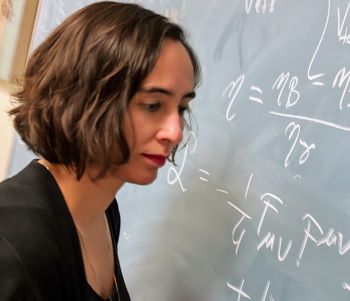
Artist Credit: Burcu Durukan @hitdrawjack
Nature loves symmetries and so do physicists! We have a left and a right hand. If you blow a bubble, it will be a sphere – the most symmetric geometry. If you push on a wall, it will push back. These symmetries are often encoded in physical laws and they are a central part of how our universe, from its fundamental building blocks to galaxies, works.
And yet, nothing is truly symmetric either. Some of us are right-handed, some left-handed. Earth is not a perfect sphere. There are little but important deviations from symmetry all around us. These asymmetries turn out to be as important as symmetries. One of the most important asymmetries in our universe is this: There is virtually no antimatter in the universe! Humans, trees, ravens, the Sun, the Solar System… are all made up of matter and not antimatter. In this talk we will explore some of the most important symmetries and how they are broken. Come with a twin if you have one!
ABOUT THE PRESENTER
 My name is Seyda Ipek (pronounced like Shae-duh E-peck). I am an assistant professor at Carleton University.
My name is Seyda Ipek (pronounced like Shae-duh E-peck). I am an assistant professor at Carleton University.
I am a theoretical particle physicist. My work is closely related to the physics done at particle colliders like the LHC. The Standard Model of particle physics describes how elementary particles, like electrons, neutrinos, quarks, interact with each other. I work on what is beyond the Standard Model.
There are many reasons why we believe the Standard Model is not a complete description of our universe. My research is mainly motivated by three questions:
- What is dark matter?
- Why do neutrinos have mass?
- Why is there more matter than antimatter in the Universe?
